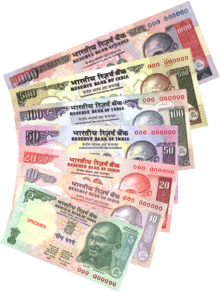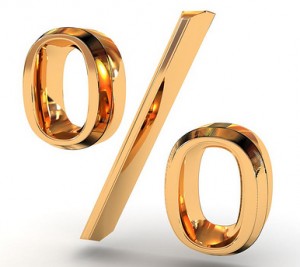 In the recent past there has been talk of the government launching a fiscal stimulus in the next budget. Fiscal stimulus essentially refers to the government increasing public spending. The idea is that with the government spending more money, economic growth will be faster.
In the recent past there has been talk of the government launching a fiscal stimulus in the next budget. Fiscal stimulus essentially refers to the government increasing public spending. The idea is that with the government spending more money, economic growth will be faster.
If the new gross domestic product (GDP) numbers are to be believed, India is likely to grow at 7.4% in this financial year (2014-2015). And at that rate of economic growth a fiscal stimulus may clearly not be required.
Nevertheless, high frequency data suggests otherwise. Exports fell in December 2014. The number of stalled projects continues to be huge. The car sales remain muted. Bank loan growth continues to remain slow. The bad loans of banks, especially public sector banks, continue to remain high. And corporate profitability continues to remain dull.
With these factors in the background, there might be pressure on the government to launch a fiscal stimulus. The question is would a fiscal stimulus be appropriate at this point of time?
One reason offered in favour of a fiscal stimulus is that the combined fiscal deficit of the central government plus the state governments has been falling over the years. It had reached 9.33% of the GDP in 2009-2010(GDP at current market prices as per the old GDP series). Since then the combined fiscal deficit has come down to 6.78% of the GDP in 2013-2014. It is expected to fall further to 6.03% of the GDP in 2014-2015. Fiscal deficit is the difference between what a government earns and what it spends.
Since the combined fiscal deficit has fallen over the years, the government might as well spend some more money in the next financial year, is one logic being offered. There are a number of reasons why this does not make much sense.
First and foremost, the fiscal deficit as a proportion of GDP has fallen primarily because the GDP at current market prices has gone up dramatically between 2007-2008 and 2013-2014, at the rate of 14.7% per year. Much of this increase was due to the high inflation(at times greater than 10%) that had prevailed during this period.
Hence, the fiscal deficit to GDP ratio has come down primarily because the denominator (i.e. the GDP) has gone up at a very fast rate due to inflation. Along similar lines the general government liabilities which includes total debt of the central as well as state governments, loans from the central government to state governments and other liabilities, has fallen over the years. In 2008-2009, the general government liabilities were at 70.6% of the GDP. By 2013-2014, they had fallen to 65.3% of the GDP.
As economist Tushar Poddar of Goldman Sachs wrote in The Economic Times recently: “ India’s stock of government debt has been eroded by high inflation in recent years.”
Hence, just looking at the fiscal deficit to GDP ratio or the general government liabilities to GDP ratio is not enough. What we also need to take a look at is whether the ability of the government to service the absolute debt that it has accumulated over the years has gone up. And this is where things get interesting.
One of the ways through which the government repays debt is through the tax revenue that it earns. Chetan Ahya and Upasana Chachra of Morgan Stanley in a recent note point out that the tax revenue earned by the central government as a percentage of the GDP has been falling over the years.
In 2007-2008, this had stood at 11.9% of the GDP. By 2013-2014, it had fallen to 10% of GDP. And in 2014-2015 it is expected to fall further to 9.6% of the GDP. What this means is that the ability of the government to service the debt that it has already accumulated has come down over the years.
Further, interest payments as a portion of the total expenditure in the annual budget of the central government have started to shoot up again. As economists Taimur Baig and Kaushik Das of Deutsche Bank Research point out in a recent research note: “India’s central government spends nearly a quarter of its total spending on servicing the large debt burden. Despite the decline in the debt/GDP ratio in recent years, interest spending has begun to rise again, both as a share of GDP and a share of total spending.”
In fact, the interest that the government pays on its outstanding debt is the biggest line item in the budget. As Baig and Das point out: “Indeed, interest spending is bigger than any other line item in India’s current expenditure (e.g. defence, subsidies, health, and education) budget. Bringing this down would create valuable space for other far more important expenditures.”
Interest spending taking up a large chunk of the budget
 |
Source: CEIC, Deutsche Bank
Also, it is worth remembering that countries do not operate in isolation. While the fiscal deficit and the overall liabilities of the government may have come out as a proportion of the GDP, they still remain high in comparison to other countries. As Poddar points out: “At 6.7% of GDP in 2013-14, the general government fiscal deficit[combined fiscal deficit of centre and states] is significantly higher than the Asian average of under 2% of GDP.”
Further, government borrowing tends to crowd out private sector borrowing and ensures that interest rates remain high. As Ahya and Chachra of Morgan Stanley point out: “We believe that national fiscal (central plus state government) deficit below 5% of GDP will be ideal to allow real borrowing cost for the private sector to reduce meaningfully and encourage private investment.”
To conclude it is worth pointing out what economists Baig and Das of Deutsche Bank Research point out: “A 1% of GDP reduction in deficit leads to growth rising by 0.4% within 2 years subsequent to the effort. Most interestingly, the effect is persistent…suggesting a lasting impact on growth from fiscal consolidation.”
What all this clearly tells us is that the government should continue on the path of fiscal consolidation that it had laid out in the last budget. The finance minister Arun Jaitley had said in his budget speech that the government wants to achieve a fiscal deficit of 3.6% of the GDP in 2015-2016 and 3% of GDP in 2016-2017. He should continue working towards these goals.
The column originally appeared on www.equitymaster.com as a part of The Daily Reckoning, on February 12, 2015



